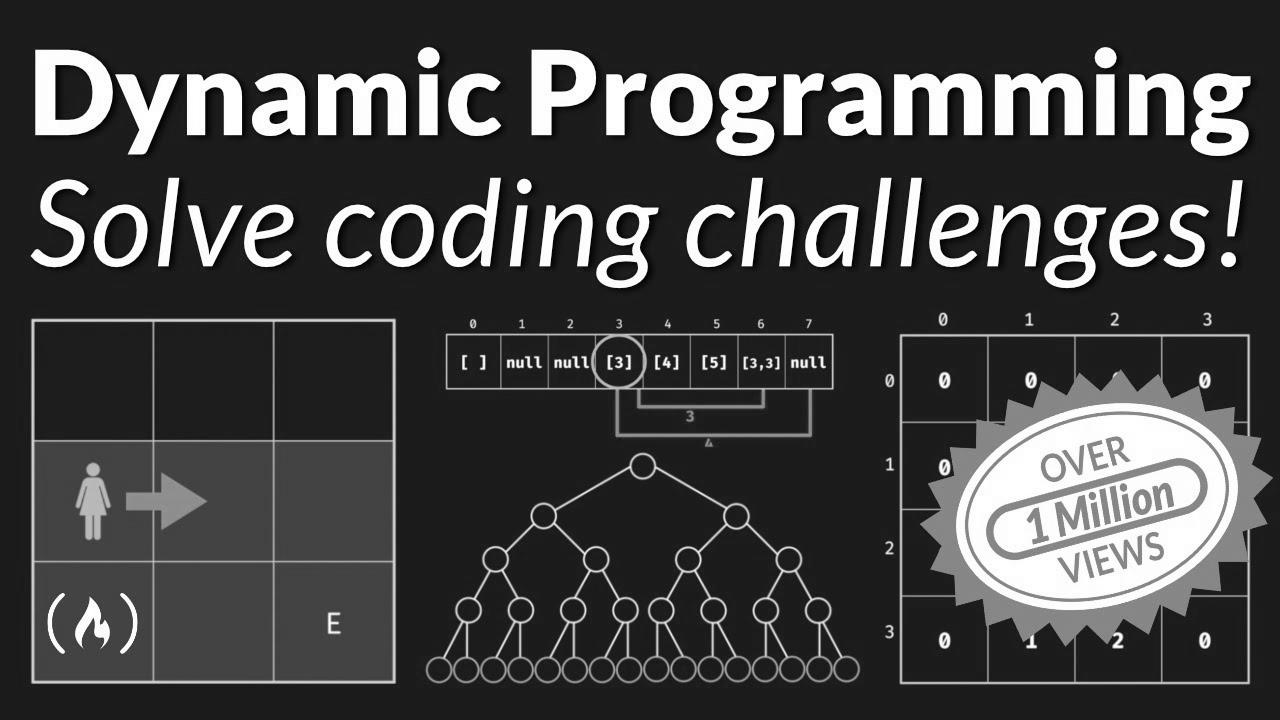Dynamic Programming – Learn to Remedy Algorithmic Problems & Coding Challenges
Warning: Undefined variable $post_id in /home/webpages/lima-city/booktips/wordpress_de-2022-03-17-33f52d/wp-content/themes/fast-press/single.php on line 26

Study , Dynamic Programming - Study to Solve Algorithmic Problems & Coding Challenges , , oBt53YbR9Kk , https://www.youtube.com/watch?v=oBt53YbR9Kk , https://i.ytimg.com/vi/oBt53YbR9Kk/hqdefault.jpg , 2309657 , 5.00 , Learn to use Dynamic Programming on this course for inexperienced persons. It could possibly aid you solve complex programming issues, such ... , 1607007022 , 2020-12-03 15:50:22 , 05:10:02 , UC8butISFwT-Wl7EV0hUK0BQ , freeCodeCamp.org , 75276 , , [vid_tags] , https://www.youtubepp.com/watch?v=oBt53YbR9Kk , [ad_2] , [ad_1] , https://www.youtube.com/watch?v=oBt53YbR9Kk, #Dynamic #Programming #Learn #Clear up #Algorithmic #Issues #Coding #Challenges [publish_date]
#Dynamic #Programming #Learn #Solve #Algorithmic #Issues #Coding #Challenges
Discover ways to use Dynamic Programming in this course for rookies. It could possibly enable you to resolve complicated programming issues, such ...
Quelle: [source_domain]
- Mehr zu learn Eruditeness is the physical entity of acquiring new understanding, noesis, behaviors, skills, belief, attitudes, and preferences.[1] The power to learn is insane by humans, animals, and some equipment; there is also show for some sort of learning in certain plants.[2] Some encyclopedism is proximate, elicited by a single event (e.g. being burned-over by a hot stove), but much skill and noesis roll up from repeated experiences.[3] The changes spontaneous by encyclopedism often last a lifespan, and it is hard to place conditioned matter that seems to be "lost" from that which cannot be retrieved.[4] Human education begins to at birth (it might even start before[5] in terms of an embryo's need for both fundamental interaction with, and exemption inside its surroundings inside the womb.[6]) and continues until death as a result of current interactions betwixt people and their environs. The nature and processes caught up in education are designed in many constituted w. C. Fields (including educational psychology, neuropsychology, experimental psychology, psychological feature sciences, and pedagogy), too as emergent fields of knowledge (e.g. with a shared fire in the topic of education from device events such as incidents/accidents,[7] or in cooperative eruditeness condition systems[8]). Explore in such fields has led to the identification of varied sorts of eruditeness. For good example, encyclopedism may occur as a outcome of accommodation, or conditioning, conditioning or as a effect of more intricate activities such as play, seen only in relatively natural animals.[9][10] Encyclopedism may occur consciously or without cognizant awareness. Education that an dislike event can't be avoided or at large may consequence in a state called knowing helplessness.[11] There is inform for human behavioral education prenatally, in which addiction has been ascertained as early as 32 weeks into physiological state, indicating that the basic troubled organization is sufficiently matured and fit for encyclopaedism and memory to occur very early on in development.[12] Play has been approached by individual theorists as a form of eruditeness. Children experiment with the world, learn the rules, and learn to act through play. Lev Vygotsky agrees that play is crucial for children's improvement, since they make pregnant of their situation through and through acting instructive games. For Vygotsky, notwithstanding, play is the first form of encyclopaedism nomenclature and human action, and the stage where a child started to understand rules and symbols.[13] This has led to a view that education in organisms is always accompanying to semiosis,[14] and often related with naturalistic systems/activity.
In canSum memoization around 1:21:30… array numbers are said to be non negative. say the first element of the array is zero , then cansum() will go in infinite loop…right ?
3:52:52 the space is actually the size of the largest value in the numbers array, (due to growing the array to i + num) which could be way larger than the target value (unless I am misunderstanding and the array becomes sparsely represented for a huge index so not memory hungry)
Thank you so much!
"potentpot" hmmm
F' I am so stupid 🙁 my brain hurts. PLZ do this in c++
Amazing, simply amazing!
Can you please try and solve the "skateboard" example for canConstruct with the tabulation strategy. It doesn't look possible to solve it with tabulation strategy discussed here.
7:38
The best explanation I've ever had! Thanks
This is one of the best videos that explain DP very well.
Finally done!!!! 🎆
32:00
1:10:28
AMAZING course! Thanks Alvin.
A quick question please – is it me or does the canSum function fail when you pass in 0 as the target? It returns true irrespective of the array of numbers.
So I watched this, I agree it's very good for what it is . The examples are contrived to hammer home similar points. My question: how do these same exact problems change when you do NOT allow choosing the same elements repeatedly in the sets, and those sets are much, much larger?
Nothing can be as useful as this video on YT.
Thanks!
This is a great tutorial, thank you Alvin.
Just and advice for new comers, don't try so hard the tabulation part, it's not intuitive, the algorithms used overther are not generalistics and there is not any recipe that works totally for them (contrary to memorization) , there are enormous jumps on the logic, and it's ok no worries, with memorization part it's enoght to pass the problems. Success!
You lost me at 1/2 simplifies to 1
i just want to thank you n^m times🙏🙏🙏🙏🙏🙏🙏🙏🙏
This is an amazing course! Thank you for sharing this with us! Just curious, is there any way we can have access to the illustrations? They are also amazing and would be great to keep in some notes. Thank you!
Just completed the course and this is awesome! Thank you so much!!!
How CanSum(7,[2,3]) will return true it should be false can someone please explain me.